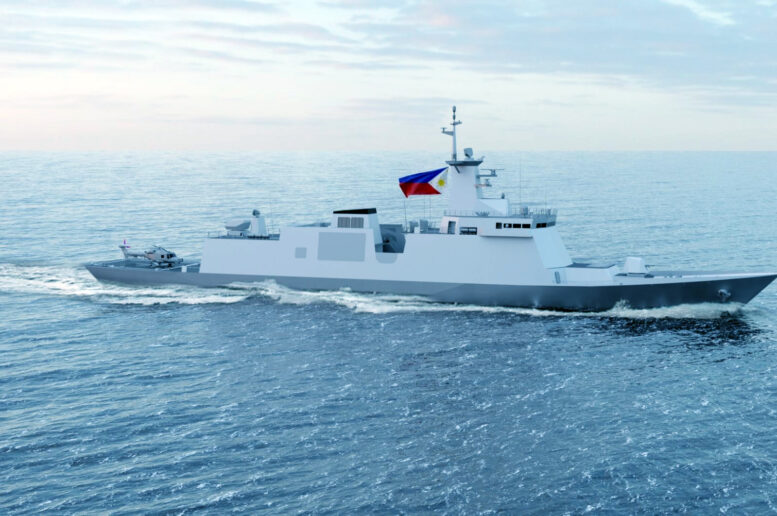In the early 2000s, the AFP created an ad hoc committee to conduct a feasibility study on the acquisition of three (3) 90-meter corvettes offered by a Canadian firm. As former skipper of a similar vessel, I was designated as the vice chair. The “project” did not materialize because the proposal lacked certain requirements. Had the government pursued it, the Navy would have deterred the frequent intrusions into our maritime zones and reduced the depletion of fishery and aquatic resources as well.
One interesting episode in the corvette project occurred during the presentation to the Government Procurement Policy Board (GPPB) co-chaired by NEDA and DBM chiefs of offices. I explained before the Board the importance, cost components, and the immediacy of acquiring naval capability to protect the national patrimony in our EEZ. A co-chair commented that the acquisition cost was enormous and with such an amount the government could probably buy thousands of “pump boats” and patrol a lot wider area than the 3 corvettes being proposed. The co-chair went on to convey another resource person’s view that any floating platform, like a locally built barge or craft, can be installed with naval guns in the navy inventory and fitted with appropriate navigational equipment and propulsion machineries to perform the same mission as the corvettes. I responded that when we send our sailors or marines in harm’s way, they should be protected by giving them the best equipment and weapons with the possibility to inflict damage to the potential threat or aggressor, to prevail and survive to undertake similar tasks in the future.
With unabated depletion of our marine resources, frequent intrusions of fishing vessels, unauthorized presence of other country’s research and combatant vessels in our jurisdictional water areas, during the high-intensity conflict in Ukraine, the urgency of acquiring robust naval and air capabilities to protect the nation’s protectors becomes imperative. The recent procurement of naval assets is a good start.
It may be recalled that the 1995 AFP modernization initiative aims to develop the AFP “where it can effectively and fully perform its constitutional mandate to uphold the sovereignty and preserve the patrimony of the nation.” It was mainly geared towards external defense, partly in response to the abrogation of the RP-US Military Bases Agreement that led to the withdrawal of the American troops and the transfer of internal security operations (ISO) to the newly-created Philippine National Police in 1992. The Chinese occupation of Panganiban (Mischief) Reef in Palawan in 1994 hastened the passage of the law. The meager funding for modernization, however, was inadequate to acquire even the modest defense capabilities because of the spiraling cost of defense equipment and the maintenance of existing platforms and weapons systems. With the reversion of the ISO to the AFP in 1998, substantial modernization funds were funneled to internal defense thereby derailing the original intent of the initiative.
The 2012 revised AFP modernization law came out due to the Chinese seizure of control over the Panatag (Scarborough) Shoal, a traditional fishing ground of Filipino fisher folk. The law included a capability acquisition for internal defense. This affected defense and military planning methodology from threat-based to capability-based, and consequently the procurement strategy. In turn, the financial requirements of the modernization ballooned.
The acquisition of two South Korean missile frigates, “heavily modified variants” of the Incheon-class future frigates, was a testament of a strong political will of the executive and legislative departments. The frigates are designed to show the flag on the fringes of our maritime zones, challenge, deter transgressors, and be prepared to face harm. Navigating the seas and challenging the maritime violators are easy tasks. Facing harm when push comes to shove and prevailing over it are not that easy. Thus, those frigates have to be hardened enough to accomplish their missions and return to port safely.
A full-pledged frigate costs around US$1.2 billion. This kind of ship possesses capabilities to address surface, air, and submarine threats to achieve credible defense. Depending on the operational tempo, upgrades, and maintenance the total life cost of a frigate is about five times the acquisition cost. One of the approaches to compare acquisition options on a cost versus effectiveness basis to satisfy the requirement of the user is the Combined Operational Effectiveness and Investment Appraisal (COEIA). The effectiveness of the frigate must be closely linked to appropriate organization, operational concept, supporting infrastructure, tactics and procedures, and command and control. The appraisal needs to satisfy the basic criteria of warfighting, operational flexibility, and value for money.
The newly acquired frigates cost a fraction of the price tag of a fully loaded frigate. This means that some vital systems and equipment have to be installed at a later date, reducing the ship capability in warfighting. This in a way changes the definition of “credible defense” that the Ukrainians, Indonesians and Vietnamese ably demonstrate. With less sorties for sovereignty patrols, these frigates would have longer service life and could be used as training platforms.
While waiting for additional armaments and munitions, it would be prudent to assess the new frigates along the lines of COEIA to establish benchmarks in future acquisitions. Likewise, the Fleet may require the frigate captains to periodically conduct a systems check of all ship equipment, constantly update and test their watch, quarter and station bill (WQSB), regularly conduct synthetic exercises, and review operational and tactical procedures including the rules of engagement.
Modernizing the navy is a complicated process involving changes in organizational and material capacities and requires understanding of the new conceptual approach to warfare that considers operational, tactical, doctrinal and technological innovation. At the core of this process are people on board ships and those above them who recognize that “a healthy and effective force, made possible by a healthy and relevant industrial base means a secure and prosperous country.” Let us protect them so they can protect us.
